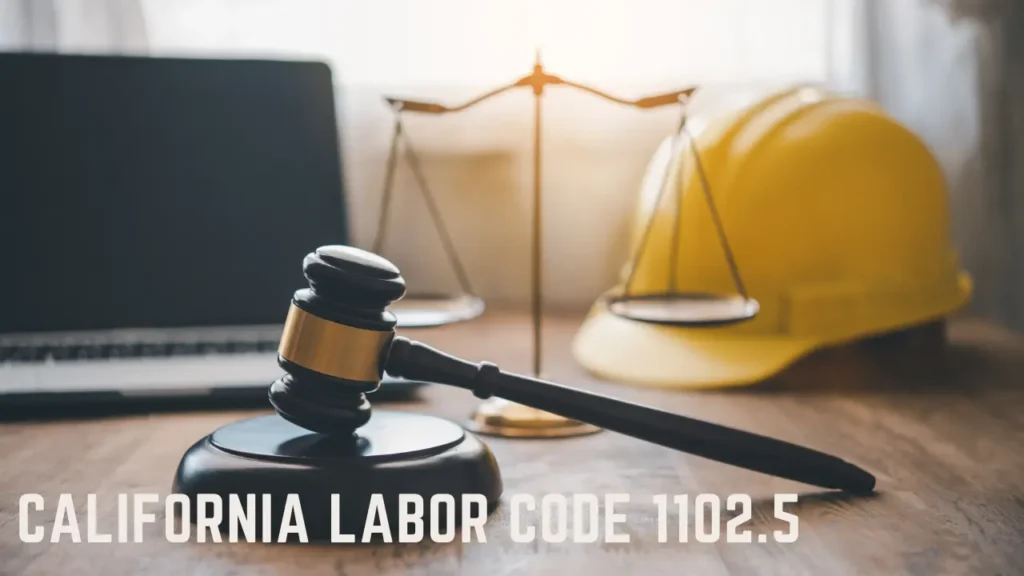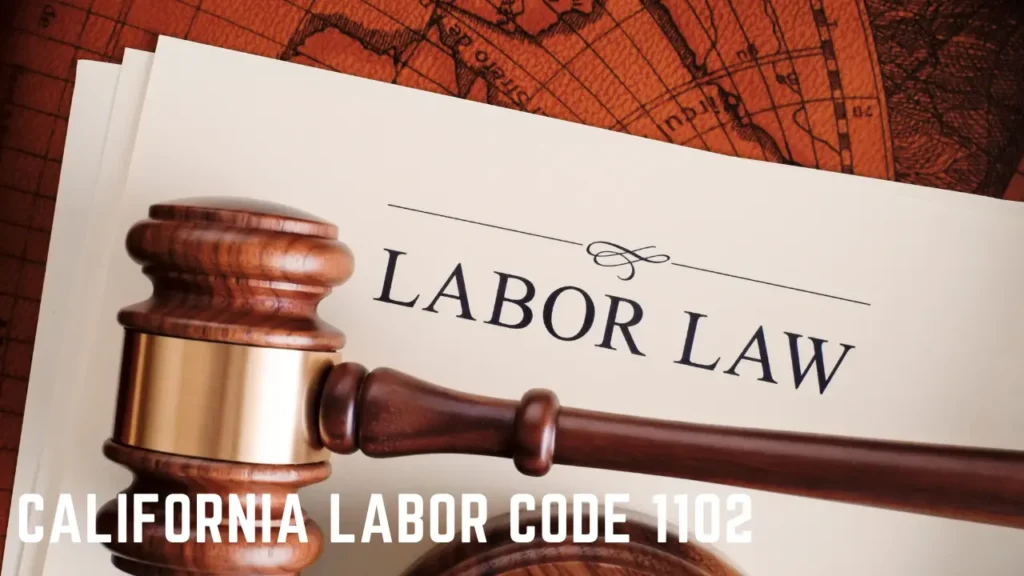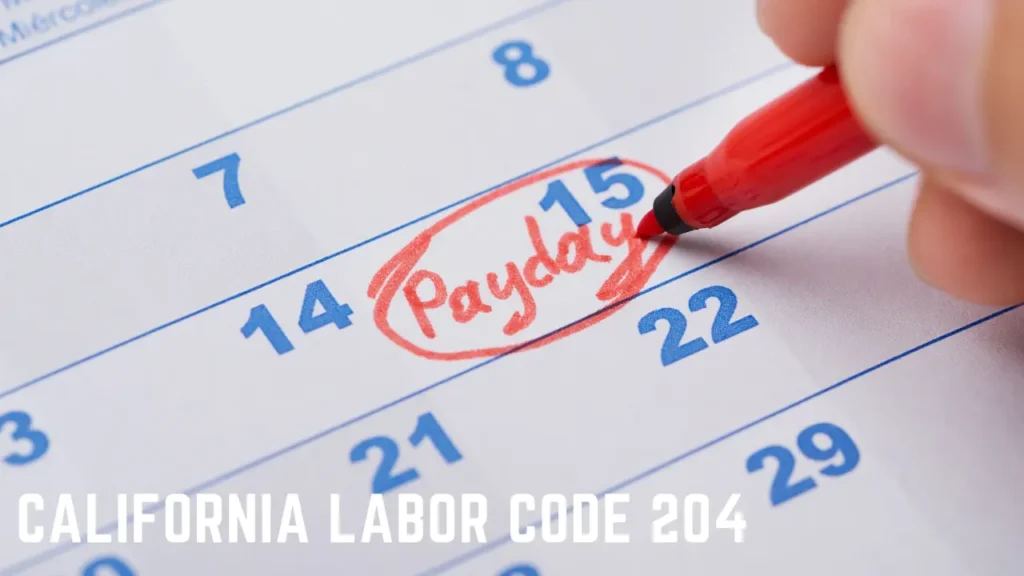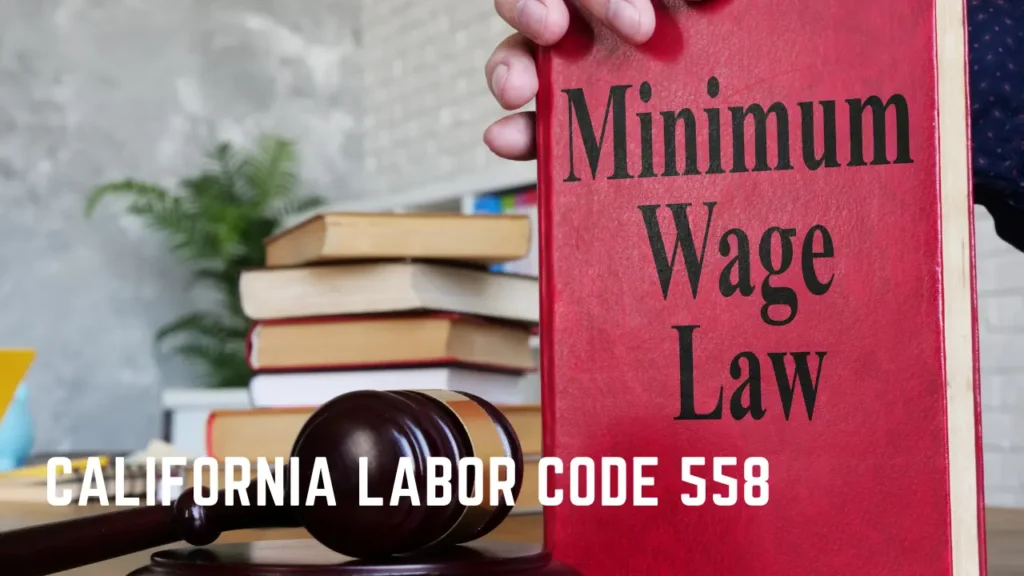Table of Contents
ToggleAs one endeavors to understand its workings, a myriad of questions emerges: How does one effectively prove a 132a violation? What role does the timing of termination and the employer’s response play? How are damages and remedies calculated and awarded? These are among the numerous issues that warrant a meticulous exploration, thus inviting a deeper investigation into the matter.
Understanding Labor Code 132a
In the landscape of employment law, California Labor Code 132a serves as a pivotal regulation, specifically designed to buffer against discrimination towards workers who have sustained injuries on the job and are seeking rightful compensation. It lays out a clear policy against any form of discriminatory practices, particularly those aimed at employees who have filed or expressed intent to file a workers’ compensation claim.
This includes actions such as wrongful termination, reduction in hours or salary, or significant changes in work duties. The code also extends protection to those testifying in other workers’ compensation cases. Violation of this regulation can result in hefty penalties for employers, including financial damages and reinstatement obligations.
Discrimination in Workers’ Compensation
Discrimination in the realm of workers’ compensation is a serious issue that necessitates an intricate understanding of both the employee’s rights and the employer’s obligations.
- Employee Rights: These include the right to file a claim without facing retaliation, such as wrongful termination, salary reduction, or change in duties. The law also extends protection to those testifying in other workers’ comp cases.
- Employer Obligations: Employers are prohibited from discriminating against employees who file compensation claims. Penalties for violation can include damages payable to the employee, and costs up to $250.
- Legal Remedies: These can include monetary compensation for lost wages, attorney fees, possible reinstatement, and increased compensation up to $10,000. Employees can file petitions for claims within one year of the discrimination.
Proving Employer Discrimination
While understanding the breadth of employee rights and employer obligations is crucial, equally important is comprehending how to substantiate claims of employer discrimination in workers’ compensation cases. The burden of proof falls on the employee, who must demonstrate not only that they filed or intended to file a workers’ comp claim, but also that they received disadvantageous treatment as a result.
Evidence of such treatment could include wrongful termination, reduction in duties, hours, or salary, or even threats of such actions. A critical consideration is the timing of these actions in relation to the claim, as well as any sudden changes in the employer’s behavior.
Damages and Remedies Overview
When an employee successfully demonstrates discrimination under Labor Code 132a, a robust array of damages and remedies becomes available, aiming to rectify the unjust treatment and provide compensation for any harm suffered.
- The remedies may include:
- Monetary compensation for lost wages and back pay
- Coverage for attorney fees
- Reinstatement for the unfairly treated employee
- The amount of compensation can reach a maximum of $10,000
- The employer is required to bear costs and expenses up to $250
- The provisions also permit the filing of petitions with the appeals board for claims within one year of discrimination
- The procedure for this includes increased compensation by one-half, up to $10,000.
Employer Firing and Misconduct
In the realm of workers’ compensation retaliation, the timing and circumstances surrounding an employee’s termination often serve as critical factors in substantiating claims of employer misconduct. The proximity of the dismissal to the filing of a workers’ comp claim could indicate a retaliatory intent.
An employer’s knowledge of the claim and subsequent actions could further expose discriminatory practices. Additionally, any adverse comments or threats made by the employer about the claim may be considered. The historical context of the employee’s performance and any documented issues could also play a role in establishing unfair treatment.
Moreover, sudden shifts in the employer’s behavior or treatment of the employee post-claim may signify retaliation. Thus, a detailed and comprehensive analysis of these factors is crucial in proving employer misconduct.
Assessing Employer’s Actions
Assessing the actions of an employer in situations of potential workers’ compensation retaliation necessitates a meticulous examination of a multitude of factors, such as the employer’s knowledge of the claim, their subsequent actions, and their treatment of the employee following the claim.
- Employer’s Knowledge of Claim
- Date and method of notification
- Employer’s immediate reaction
- Subsequent Actions
- Changes in employee’s duties, hours, or benefits
- Disciplinary actions or threats
- Treatment of Employee
- Comparison of treatment before and after the claim
- Analysis of employer’s history of retaliation
This assessment requires a detailed and analytical approach to accurately determine the possibility of retaliation and uphold the protections provided under Labor Code 132a.
Employee Performance Analysis
Beyond evaluating the employer’s actions and treatment of the worker post-claim, it becomes equally pivotal to scrutinize the employee’s performance history. This examination can provide critical insights into the legitimacy of any subsequent alterations in employment conditions. A meticulous review of the employee’s historical performance, including productivity, attendance, and adherence to company policies, may reveal patterns or discrepancies. These observations can either support or undermine a 132a retaliation claim.
If, for instance, an employee’s performance has been consistently satisfactory prior to the claim, but the employer suddenly alleges performance issues post-claim, it could indicate potential retaliation. Conversely, a history of poor performance might lend credibility to the employer’s actions. This analysis, while complex, is vital in establishing the context and veracity of the claim.
Serious and Willful Misconduct
Serious and willful misconduct represents a significant factor in workers’ compensation cases, typically characterized by an employer’s intentional actions or neglect that could foreseeably lead to serious injury.
Employer Misconduct
- Involves actions where an employer knowingly or negligently fails to enforce safety regulations
- Can include ignoring known hazards or not providing adequate safety equipment
Legal Implications
- Increases compensation by 50% under California Labor Code § 4553 if proven
- Requires substantial evidence showing the employer’s intentional harmful conduct
Proving Misconduct
- Relies on demonstrating the employer’s awareness of a dangerous situation
- Involves showing the employer did nothing to prevent potential injury
- May include witness testimonies, safety inspection reports, or emails acknowledging the risk.
Filing a Compensation Claim
When an employee experiences discrimination or retaliation due to a workers’ compensation claim, it is crucial to understand the process of filing a claim with the California Workers Compensation Appeals Board (WCAB).
Claims must be filed within one year of the discriminatory act or termination.
The WCAB then investigates and adjudicates the claim, determining whether the employer violated Labor Code 132a and what remedies are appropriate. These remedies can include increased compensation, reimbursement for lost wages and work benefits, and potential reinstatement.
However, the WCAB does not determine guilt for misdemeanor violations. These complaints should be directed to the Division of Labor Standards Enforcement.
Proper and timely filing is critical to protect and assert an employee’s rights under Labor Code 132a.
Legal Assistance and Resources
Having discussed the process of filing a claim, it is equally important to consider the role of legal assistance and the resources available to employees navigating the complexities of workers’ compensation discrimination and retaliation cases.
- Legal Assistance: Expert attorneys can help interpret Labor Code 132a and guide through the filing process. Their knowledge can be invaluable in proving employer discrimination and securing rightful compensation.
- Resources:
- The California Workers Compensation Appeals Board (WCAB) is responsible for handling claims.
- The Division of Labor Standards Enforcement addresses misdemeanor violations.
Contacting Jonny Law Group
For employees facing workers’ compensation discrimination or retaliation, initiating a dialogue with the Jonny Law Group can be a pivotal step toward securing their rights and benefits.
The Jonny Law Group has a team of skilled labor and employment attorneys who specialize in handling such cases. They offer a confidential case discussion and prompt response to queries, ensuring a client-centric service.
Their local offices are strategically situated in various cities across California for easy accessibility. The legal team at Jonny Law Group is equipped to handle claims for increased compensation, reimbursement, and reinstatement.
Conclusion
In conclusion, Labor Code 132a is a significant legal provision in California, designed to prevent employer discrimination or retaliation against workers filing compensation claims.
Understanding its intricacies can be a complex process, requiring the assistance of legal professionals.
However, it serves as a crucial tool in protecting the rights of injured workers, ensuring they are not unjustly disadvantaged, and providing them with a fair and just treatment in the workplace.














